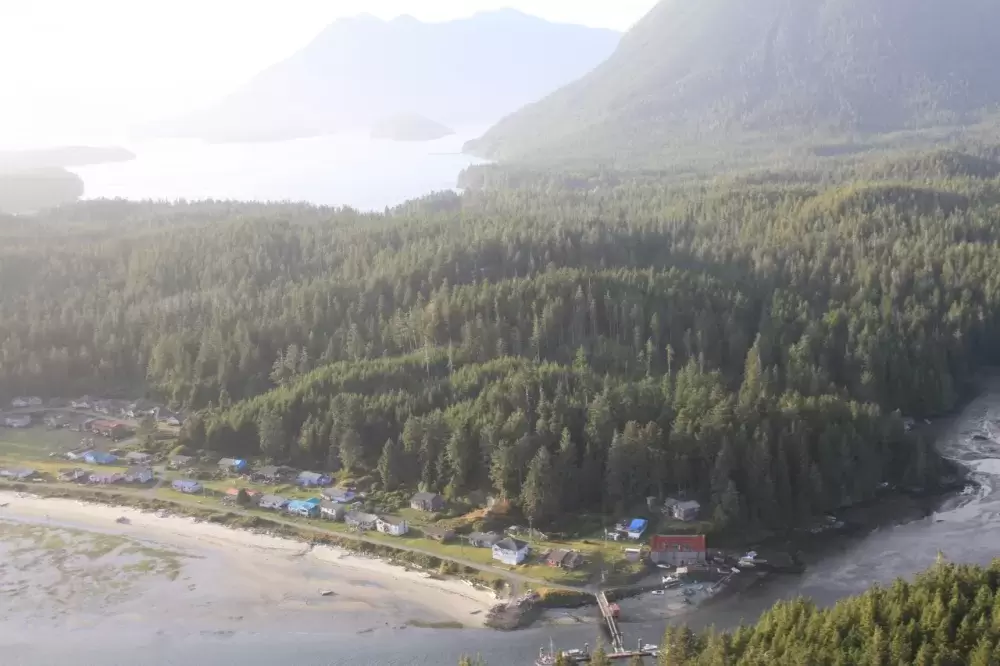With record snowpacks and record high temperatures on the way, much of central and southern B.C. is braced for potentially catastrophic flooding - but the picture is much less threatening for Nuu-chah-nulth-aht on Vancouver Island.
On Friday, Ha-Shilth-Sa took part in an interactive teleconference with the B.C. River Forecast Centre on the current flooding situation in the province. The main areas affected are the Northern Okanagan, Kootenays, Upper Fraser Basin and the Boundary Region, according to River Forecast head David Campbell.
“We’ve seen a worst-case scenario leading into that,” Campbell said. “Very warm weather over the past week, followed by very heavy rainfall…this is superimposed on an extremely high snowpack in those regions.”
Campbell said many rivers are at record levels, with the Fraser approaching levels not seen since the disastrous flood season of 1948.
As a result, the province has declared 23 local states of emergency, issued 31 evacuation orders (1,993 homes) and 36 evacuation alerts (930 homes) according to Chris Duffy, executive director of programs with Emergency Management BC [EMBC]. Ten band council resolutions have been issued.
“Nineteen local authorities have Emergency Operations Centres activated and nine First Nations have Emergency Operations Centres activated and we have three reception centres open,” Duffy said. “As far as flood assets, we have deployed more than two million sandbags to local authorities and First Nations.”
The province has acquired extra sandbagging machines from Saskatchewan to keep up with the expected demand.
While the conference was focused on the most affected regions, Ha-Shilth-Sa was able to ask Campbell if there was any immediate threat of flooding on Vancouver Island. According to snowpack data provided by the River Forecast Centre, most Island snowpacks are above the annual averages, with temperatures set to peak at 29 degrees next week.
“We generally don’t see significant flood issues on the Island due to snowmelt,” Campbell said. “We’re generally unable to melt snow as fast as we can ‘dump it on’ with rain in the fall and winter. Ironically, we’ve got the highest snowpack anywhere in the province on the Island and we’ve melted it most rapidly over the past three weeks, and we’re really not seeing a lot of impacts from that.”
But with so many potential emergencies on the immediate horizon, the province has put out the call for emergency personnel from other areas, including Nuu-chah-nulth territory, according to Hugh Braker, who chairs the Tseshaht First Nation Emergency Preparedness Committee.
Tseshaht has been recognized by EMBC as a leader in emergency preparedness among small B.C. communities.
“The interior of B.C. is facing some severe flooding over the next week,” Braker said, “and now they’re looking at Smithers as well. So right now, emergency preparedness-trained people are stretched to the limit right now. So they are putting out a call for people who are trained in emergency preparedness to go out and help.
“The call came to Tseshaht. We have about a dozen people who are trained here – more than the average community. We do a lot of training because we get flooding almost every year.”
Those trained members have now been asked whether they are available for deployment beginning next week. Some would be required to take time off work in order to help out, Braker noted.
“I am telling them that, for myself, I will be available after June 1,” he said, noting that the emergency conditions are expected to continue for another month.
Braker said that should the Fraser reach 1948 flood levels, the consequences could be staggering.
“There are a large number of First Nations along the Fraser – 30 from Musqueum (South Vancouver) to Yale alone,” he said. “If the Fraser does flood, they’re looking at Prince George all the way to the mouth. Then you’re looking at something like 50 First Nations. Some of them are very small and they don’t have a lot of trained people. We will be targeting those who need help, and organizing them.”
Braker said a Tseshaht team would likely deploy on Monday or Tuesday.







